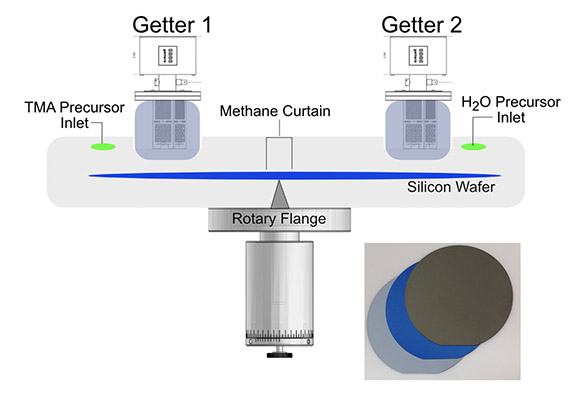In-Space Coating Development Utilizing Atomic Layer Deposition (ALD)
PI: Vivek Dwivedi, NASA/Goddard Space Flight Center, Raymond Adomaitis (Co-I), University of Maryland - College Park
PI: Vivek Dwivedi, NASA/Goddard Space Flight Center, Raymond Adomaitis (Co-I), University of Maryland - College Park

- TA08 Science Instruments, Observations and Sensor Systems
Atomic Layer Deposition (ALD) is a cost-effective nanoadditive-manufacturing technique that allows for conformal coating of substrates with atomic control in a benign temperature and pressure environment. Using paired precursor gases, thin films can be deposited on flat or textured surfaces ranging from glass, polymers, aerogels, and metals. Through atomic layer control, where single layers of atoms are deposited, fabrication of metal transparent films, nano-laminates, and coatings of nano-channels and pores is achievable. Reaction mechanisms in ALD are normally self-limiting, allowing for atomically accurate control of nanometer (nm) thicknesses. It is the simplicity in the ALD process that allows for a simple reactor design encompassing a reactor volume and electro-pneumatic valves to allow gas pulsing and thus it can be readily tested in-space.
Current: TRL - 3 Anticipated After Flight Test: TRL - 6
NASA
Technology Details
-
Selection DateINTERNAL2020
-
Program StatusActive
- 0 sRLV
Development Team
-
PIVivek Dwivedi
-
PI Organization
-
Co-IRaymond Adomaitis
-
Co-I Organization
-
SponsorNASA
-
More Information

